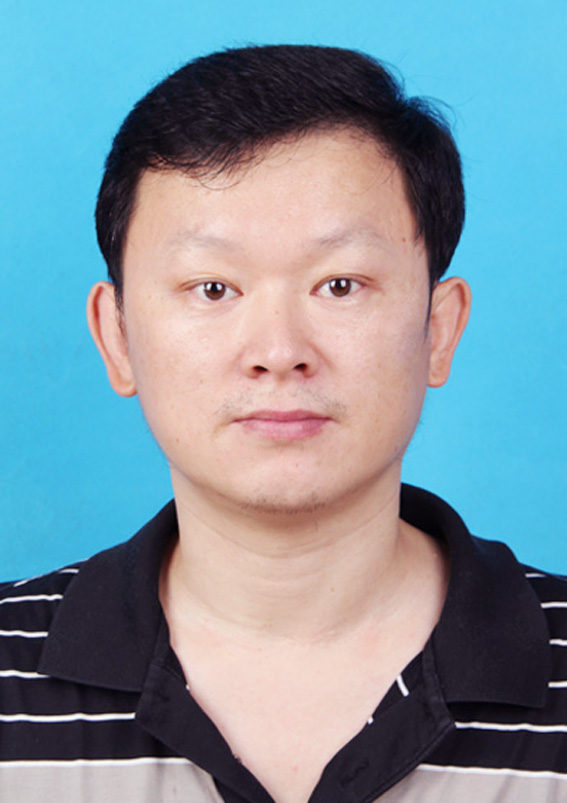
- 陶勇
- 电子邮件:taoyong@cib.ac.cn
- 职 称:研究员
- 学 历:博士研究生
- 通讯地址:成都市人民南路四段9号
- 邮 编:610041
个人简历
陶勇:博士,研究员,研究生导师,2006年7月进入中国科学院成都生物研究所工作,主要从事环境微生物学及废水/废弃物资源化研究。先后承担完成了国家863专题、国家自然科学基金、中科院知识创新工程重要方向项目与财政部战略生物资源等多项课题,入选2011年中国科学院“西部之光”重点人才培养计划。已发表学术论文50余篇,其中SCI论文30余篇,申请国家发明15,其中授权专利11项。
研究方向
1. 有机废弃物资源化与能源化转化过程及工艺研究;
2. 中链脂肪酸的生物合成工艺、途径及机制研究;
3. 环境微生物学及功能菌株菌剂的创制及应用。
获奖及荣誉
承担科研项目情况
1. 国家自然科学基金面上项目:乳酸和乙醇协同介导的窖泥微生物群落构建及作用机制(2025-2028年)
2. 四川省科技项目“浓香型白酒酿造微生物多样性与风味物质形成相关性研究”(2021-2024)
3. 四川省酿酒微生物重点实验室开放课题“基于培养组学的白酒功能菌筛选及合成微生物组构建”(2024-2026年)
4.国家自然科学基金面上项目:瘤胃菌CPB6以乳酸为底物合成己酸的分子机制”(2018-2021年)
5. 四川省应用基础研究计划项目(重点)“生物质废物/废水合成中链脂肪酸的关键技术研究”(2016-2019年)
6. 十三五”国家重点研发计划子课题“ 稻田土壤镉的生物-巯基化钝化剂的研制与应用” (2016-2020年)
7. 中国科学院战略生物资源服务网络计划生物资源衍生库课题“乳酸利用型己酸功能微生物群体合成库的构建与应用”(2016-2018年)
8. 国家自然科学基金面上项目:“基于宏转录组学的窖池微生物共酵生香的分子机理研究”(2015-2016年)
9. 国家自然科学基金面上项目“基于宏基因组与转录组学的窖泥微生物群落结构与功能研究”(2013-2016年)
10. 中国科学院“西部之光”人才培养计划重点项目“垃圾渗滤液生物电化学脱氮技术与示范”(2010-2012年)
11. 国家自然科学基金面上项目“氮、磷胁迫下复合菌群BMA对蓝藻种群的影响”(2009-2011年)
12. 国家政部战略生物资源科技支撑专项课题等项目“环境微生物资源收集与保藏”(2009-2010年)
13. 国家“十一五”863专题课题“垃圾渗滤液硝化-原位反硝化-氮资源利用与减排技术研究”(2008-2010年)
代表论著
2. Yan Wang, Wen Zhou, Yong Tao* et al., Profiling the global map of ester-producing metabolism and the response patterns of key genes to environmental factors during medium-high temperature Daqu production, Food Bioscience, 2024, 62,105462
3. Li, L., Wu, J., Tao, Y*., Xu, Z., Tang, Q., & Liu, M. (2024). Seasonal Dynamics of Microbial Community in Strong‐Flavor Baijiu Fermentation. Journal of the Science of Food and Agriculture. 2024, 30;104 (11): 6605-6614.
4. Xie G, Huang D, Duan X, Liu J, Yuan S, Tao Y*. Mechanisms for the Enhancement of Caproic Acid and H2 Production in Ruminococcaceae Bacterium CPB6 by Fe(II) and Mg(II): Growth and Gene Transcription Analyses. Appl Biochem Biotechnol. 2024,196(11):8156-8167.
5. Yang, N., Tao, Y., Wang, X., Zhan, G., He, X., Zhang, L., ... & Li, D.. Impact of low temperature on ex situ nitritation/in situ denitritation in field pilot-scale landfill for postclosure care of leachate treatment and gas content. Waste Management, 2021,131, 61-71.
6. Lu, S., Jin, H., Wang, Y., & Tao, Y*. Genome-wide transcriptomic analysis of n-caproic acid production in Ruminococcaceae bacterium CPB6 with lactate supplementation. Journal of Microbiology and Biotechnology, 2021,31(11), 1533-1544.
7. Yang, Q., Guo, S., Lu, Q., Tao, Y*., Zheng, D., Zhou, Q., & Liu, J. (2021). Butyryl/Caproyl-CoA: Acetate CoA-transferase: cloning, expression and characterization of the key enzyme involved in medium-chain fatty acid biosynthesis. Bioscience Reports, 41(8), BSR20211135.
8. Yang, Q., Wei, C., Guo, S., Liu, J., & Tao, Y*. Cloning and characterization of al-lactate dehydrogenase gene from ruminococcaceae bacterium CPB6. World Journal of Microbiology and Biotechnology, 2020, 36, 1-10.
9. Li, L., Lin, Q., Li, T., He, X., Peng, S., & Tao, Y*. Transcriptional response of Pseudomonas chenduensis strain MBR to cadmium toxicity. Applied Microbiology and Biotechnology, 2020,104, 9749-9757
10. Lingjuan Li, Qiang Lin, Xiangzhen Li, Tiezhu Li, Xiaohong He, Daping Li, Yong Tao*. Dynamics and potential roles of abundant and rare subcommunities in the bioremediation of cadmium-contaminated paddy soil by Pseudomonas chenduensis. Applied Microbiology and Biotechnology. 2019, 103:8203–8214
11. Lingjuan Li, ShoutongWang, Xiangzhen Li, Tiezhu Li, Xiaohong He, Yong Tao*. Effects of Pseudomonas chenduensis and biochar on cadmium availability and microbial community in the paddy soil. Science of the Total Environment. 2018,640-641:1034-1043
12. Han Wang, Xiangzhen Li, Yi Wang, Yong Tao*, et al. Improvement of n‑caproic acid production with Ruminococcaceae bacterium CPB6: selection of electron acceptors and carbon sources and optimization of the culture medium. Microb Cell Fact ,2018, 17:99
13. Xiaoyu Zhu, Yan Zhou, Yi Wang, Tingting Wu, Xiangzhen Li, Daping Li and Yong Tao*. Production of high‑concentration n‑caproic acid from lactate through fermentation using a newly isolated Ruminococcaceae bacterium CPB6. Biotechnol Biofuels. 2017, 10:102
14. Yong Tao, Xiang Wang, Xiangzhen Li*, Na Wei, Hong Jin, Zhancheng Xu, Qinglan Tang, Xiaoyu Zhu. The functional potential and active populations of the microbiome in pit mud used for the production of Chinese strong-flavour liquor. Microbial Biotechnology. 2017,6:1603-1615
15. Yong Tao, Xiaoyu Zhu, Han Wang, Yi Wang*, Xiangzhen Li, Hong Jin, and Junpeng Rui. Complete genome sequence of Ruminococcaceae bacterium CPB6: A newly isolated culture for efficient n-caproic acid production from lactate. Journal of Biotechnology. 2017, 259:91-94
16. Yanyan Zhang, Xiaoyu Zhu, Xiangzhen Li, Yong Tao*, Jia Jia, Xiaohong He. The process-related dynamics of microbial community during a simulated fermentation of Chinese strong-flavored liquor. BMC Microbiology, 2017, 17:196
17. Yong Tao*, Xiaohong Hu, Xiaoyu Zhu, Hong Jin, Zhancheng Xu, Qinglan Tang, Xiangzhen Li. Production of Butyrate from Lactate by a Newly Isolated Clostridium sp. BPY5. Appl. Biochem. Biotechnol., 2016,179,361–374
18. Xiaoyu Zhu, Yong Tao*, Cheng Liang, Xiangzhen Li, Na Wei, Wenjie Zhang, Yan Zhou, Yanfei Yang & Tao Bo. The synthesis of n-caproate from lactate: a new efficient process for medium-chain carboxylates production. Scientific Reports . 2015, 14360(5)
19. Yin Q, Tao Yong*, Zhu X, Zhou Y, He X, Cheng L, Huang Y, Li D. Clostridium liquoris sp. nov., isolated from a fermentation pit used for the production of Chinese strong-flavoured liquor. Int J Syst Evol Microbiol. 2016,66(2):749-754.
20. Tao, Yong; Li, Jiabao; Rui, Junpeng; Xu, Zhancheng; Zhou, Yan; Hu, Xiaohong; Wang, Xiang; Liu, Menghua; Li, Daping; *Li, Xiangzhen, Prokaryotic Communities in Pit Mud from Different-Aged Cellars Used for the Production of Chinese Strong-Flavored Liquor, Applied and Environmental Microbiology, 2014, 80(7), 2254-2260.
发明专利
1. 陶勇、黄朵、何晓红,王艳. 一种共培养产己酸的微生物菌剂及其制备方法和应用(ZL2410035901-1)
2. 陶勇,何晓红,李大平 等。一种微生物共培养催化碳水化合物合成己酸的方法(201910344898.7)
3. 陶勇,何晓红,李大平 等。 一种酿酒黄水资源化利用的方法(CN201810243651.1)
4. 陶勇; 朱晓宇; 何晓红等;一株瘤胃菌及其应用 (CN 201710092267.1)
5. 陶勇; 朱晓宇; 何晓红等.一种通过微生物催化乳酸合成己酸的方法(ZL201410593446.X.)




